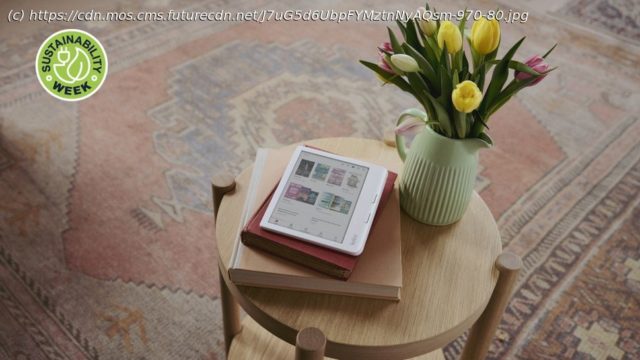Ereader makers have taken steps to make digital reading greener, but how sustainable is it?
Blame it on the digital age or on the Covid lockdown years, but the way we read has changed. We’re increasingly consuming books digitally, with several of us adopting ereaders instead of buying printed books. This change in behavior could be considered better for the planet – after all, no trees are getting destroyed to make said books.
That’s not the only reason to read ebooks. Did you know that about 26% of worldwide waste is paper and paperboard? Clearly we’re not all recycling as much as we should be. UK-based waste management company Business Waste has some interesting stats on how much paper we throw away, and it doesn’t even take into account all the paperbacks and text books we might be discarding. Sure, paper decomposes, but that takes 2-6 weeks and the ink could be poisoning our soil and groundwater.
On the other hand, manufacturing an electronic device arguably has a bigger carbon footprint. According to a New York Times report from 2010, a single ereader needs about 33 pounds of minerals and 79 gallons of water to make, and it has a limited lifespan.Sustaining digital reading
Manufacturing processes may have changed since that report was published, and while I’m not saying they’re a sustainable process, there are some ereader makers trying to make a change.
Amazon’s 2022 Kindle was the first to be made using up to 75% recycled plastic in its body and up to 90% recycled magnesium. Amazon adopted a similar stance with the Kindle Scribe a little later that same year, with the larger note-taking ereader built with 48% recycled plastic and 100% recycled aluminum.
Japanese-Canadian brand Kobo, however, is making ereading even more sustainable.
Home
United States
USA — software Ebook vs paper: which reading medium is better for the environment?






